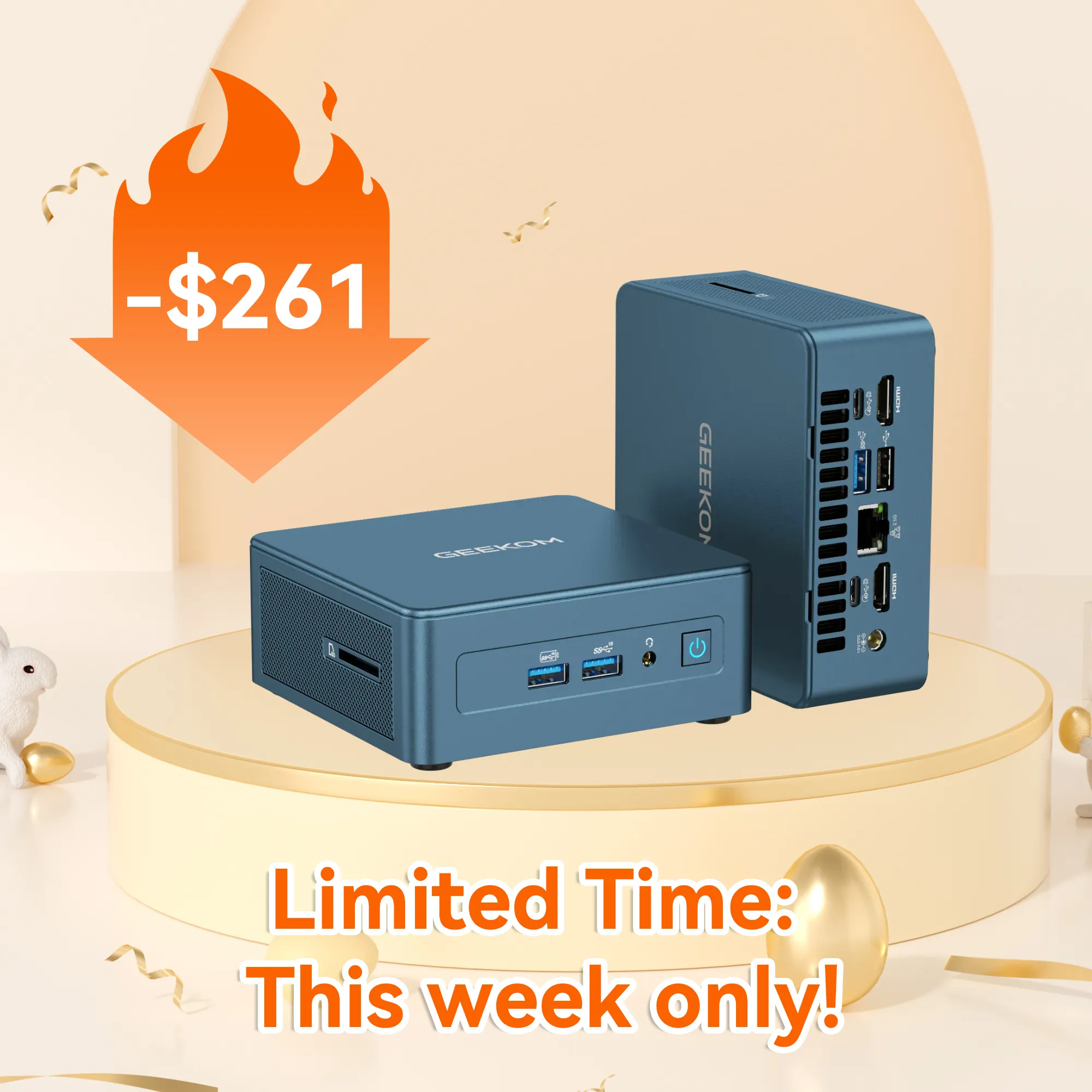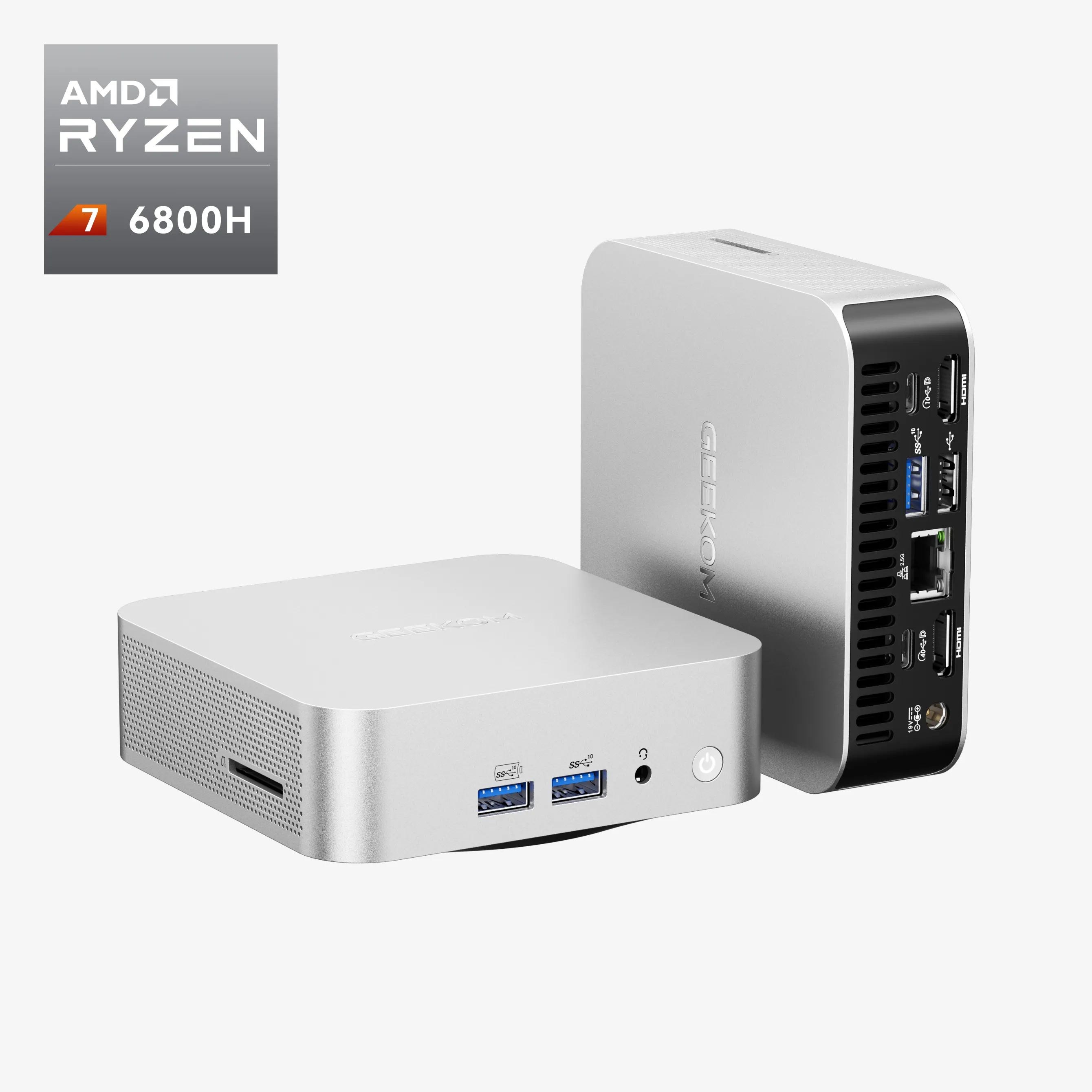When you think of computer graphics, or look to buy a new graphic card, two names stick out—Advanced Micro Devices (AMD) and Nvidia. Intel produced a separate graphics card for a while but discontinued its ARC external graphics card in 2023. However, Intel still has embedded graphics in many of its CPUs. Third-party card manufacturers still offer cards based around Intel’s ARC GPUs (Graphic Processing Unit) but have a minimal share of the market compared to AMD and Nvidia.
Depending on the intended use, there’s no clear leader in the GPU field, with both AMD and Nvidia tracing their GPU history back to the late 90s. But at present AMD external and embedded GPUs are a very popular choice.
Doing a CPU one-on-one comparison between AMD and Nvidia graphics cards and GPUs is one way to decide on a GPU choice that will meet your needs, but to be honest, in the real day-to-day world there’s not much difference between the vendors at the same performance and price levels, so let’s take a look at what AMD has to offer.
As with PCs and CPUs, AMD’s GPUs have undergone an evolution over time. AMD was founded in 1969, and for most of the 70s, it focused on logic chips, RAM, and other microprocessors. By the 1980s, AMD was producing x86 CPUs for Intel, and in the early 90s, reverse-engineered a clone of the 8086. During the late 90s and early 2000s, AMD focused on its Athlon CPU.
A GPU timeline
GPUs have undergone significant improvements with each generation. Nvidia’s first successful video card was the GeForce 256, released in 1999. It introduced the term GPU and introduced transform and lighting engines which are necessary to produce realistic 3D images. Video cards before this were 2D graphics accelerators and were generally not considered GPUs.
AMD’s entry into GPUs came with its acquisition of ATI in 2006. ATI developed the Rage series of embedded GPUs, from 1996 through 2000. These provided an initial entry into 3D acceleration, enhanced 3D capabilities and Direct3D support. The Rage 128 (1998) improved 3D rendering. In 2000, ATI introduced the Radeon 7000 series, which further improved 3D performance and offered support for DirectX 7. The Radeon 8500, 900, and 9700 brought support for DirectX 8.1 and DirectX 9 as well as AGP 8x (Accelerated Graphics Port).
After the ATI acquisition, AMD introduced the Radeon HD 2000 and Radeon HD 3000 series. These added DirectX 10 and DirectX 10.1 support as well as improving performance and power efficiency. This generation also added support for the latest API (Application Programming Interface). The AMD Radeon series of GPUs were designed for gamers with large amounts of memory.
The Radeon HD 4000 and Radeon HD 5000 series (2008-2009) boosted performance to 1TFLOP (Trillions Of Operations Per Second), used GGGR5 memory which had a wider bandwidth, provided DirectX 11 support, introduced Eyefinity Technology which enabled support for multiple displays from a single GPU, and added Tessellation which improved the realism of 3D models. The next model in the Radeon line, the Radeon HD 7000 improved parallel processing.
The Radeon identification changed in 2013 with the introduction of the Radeon R7 and R9 series which added TrueAudio Technology, hardware-accelerated audio processing.
The Radeon RX 400 and RX 500 (2016-2018) enhanced support for VR (Virtual Reality) applications and offered higher clock speeds for improved performance. The RX Vega series (2017-2018) enhanced compute performance and capabilities necessary for the emerging AI and machine learning application being developed.
In 2019, AMD introduced the RDNA and RDNA2 architecture in the Radeon RX 5000 and RX 6000 series. The RDNA architecture in the Radeon RX 5000 focused on gaming performance, and power efficiency, and offered PCIe 4.0 support. The Radeon RX 6000 added hardware support for ray tracing which further improved realism in games, provided support for DirectX 12 Ultimate for the latest graphics API features, and Infinity Cache, which improves memory bandwidth and performance.
The current Radeon series, the Radeon RX 7000 is based on the RDNA 3 architecture which adds AI processing enhancements. These consist of the Radeon RX 7900 XTX which is the top of the line, the Radeon RX 7900 XT, which provides strong gaming performance for 4K gaming, the Radeon RX 7800 XT which is an upper mid-range GPU, and the mid-range Radeon RX 7700 XT, which is a great choice for 1440p gaming, and improved ray tracing. The Radeon RX 7900M uses GDDR6 memory and is designed to provide the high frame rates desired in games and other video applications.
In addition to the Radeon series, AMD also has a second lineup of GPUs, the Ryzen series based on AMD’s Zen architecture. These were introduced in 2017 and included the Ryzen 3, Ryzen 5, and Ryzen 6 1200 through 1800X GPUs. 2028 saw AMD introducing the Ryzen 2000 series based on its Zen + Architecture with models ranging from the Ryzen 3 2200G to the Ryzen 7 2700X. These had better single-core performance and a higher clock speed than previous Ryzen GPUs.
The next Ryzen series, Ryzen 3000 introduced in 2019, offered better power efficiency and performance, as well as PCIe 4.0 providing faster data transfer. The Ryzen 4000 Series focused on mobile and desktop APUs (an APU, Accelerated processing unit) provides the CPU and GPU on a single chip). The Ryzen 5 models offered improved single-core performance and better performance in gaming and other applications. The Ryzen 6000 series, based on Zen 3+ architecture, improved graphics for superior gaming and enhanced AI and security features. Introduced in September 2022, the Ryzen 7000, based on Zen 4 Architecture, offered higher clock speeds, support for DDR5 memory, support for PCIe 5.0, and better performance in single and multi-threaded applications.
Coming shortly are AMD’s Strix Point series which are specifically designed to handle advanced AI workloads. They will incorporate on-chip NPUs (Neural Processing Units) that can perform Trillions of Operations Per Second (TOPS) and should support Microsoft’s Copilot+ AI engine.
What’s the best one for me?
There’s no easy or definite answer to this question. Part of the answer is performance, but the primary consideration for many of us is going to be budget and use. If performance is your primary need, and you don’t need the mobility of a laptop, a desktop PC with a high-end graphics card with plenty of on-board RAM and a CPU that’s at the top of the food chain is going to meet many of the probable needs you have in mind. It’s also going to put a pretty big dent in your wallet. This is particularly true when it comes to gaming, where using an upscale CPU, a top-of-the-line graphics card or GPU, and loads of RAM means a difference between great gameplay and one that suffers annoying stutters.
It’s also important to realize that in many instances a laptop CPU/GPU isn’t going to produce the same performance as a similar desktop processor/GPU. More often than not, laptops have a similar CPU/GP to the desktop model, but they might not have the same speed. The reason for this is simple. Laptop processors and GPUs have less power requirements and less overclocking capability. Besides a power constraint, there’s also a heat constraint with a laptop.
The exception is often when a laptop version of a CPU/GPU is used in a small form factor desktop, often called a tiny PC or NUC (New Unit of Computing). These often have the same power and heat constraints as a laptop. With many of AMD’s Ryzen CPUs, the performance differential between desktop and laptop versions of CPUs is, in most cases, not noticeably different unless you plan on overclocking the PC.
That being said, what you might want to investigate depends on what you are going to use the PC for. For most office-oriented tasks such as word processing, spreadsheets, and web browsing, you should be fine with a Ryzen 5 6600 or Ryzen 9 6900. If you plan to do content creation, video editing, serious game playing or want to run AI internally on the PC rather than over the web, consider the most you can afford, such as the Ryzen 7 7700 or Ryzen 9 7900. Plan on spending as much as possible on RAM, and at least 1TB of SSD memory.
In the coming months, AMD will be coming out with a new series of Processors/GPUs with enhanced NPUs (Neural Processor Units) that can be optimized for AI. These will likely be available for laptops initially.

Ted Needleman
Ted Needleman has been writing reviews and columns on computers since the late 1970s. He has been a programer, DP Manager, Accountant, the Editor in Chief of a technology magazine, and the Director of a printer and scanner test lab.























